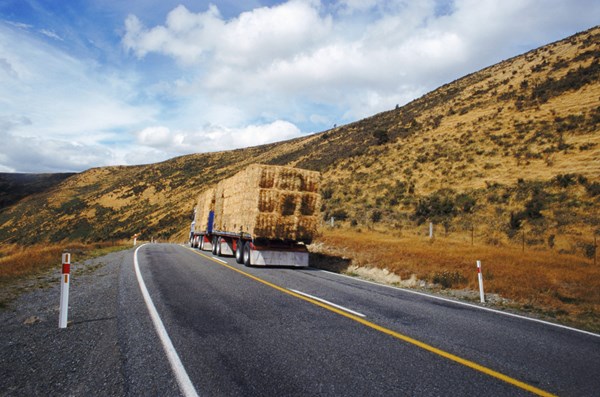 Credit: Thinkstock
Credit: ThinkstockNow is the time to purchase hay for your horse facility. Although submitting a hay analysis for forage nutritive value is always recommended, in some situations horse owners need to purchase hay before a hay sample can be submitted. Listed below are some of the characteristics that should be used to physically evaluate horse hay.
Hay maturity has the greatest impact on forage quality. Forage plants have more fiber and less crude protein as they become more mature. Indicators of maturity are flowers for legumes and seed heads for grasses. Thick stems in both cases are indicators of maturity. Hay that is more mature is better suited for horses with less caloric needs including adult horses at maintenance or over?weight horses.
Hay content is the percent of grass (i.e., orchardgrass, bromegrass) and legumes (i.e., alfalfa or clover) in the hay. When baled at a similar maturity, legumes have higher amounts of digestible energy, crude protein and calcium and lower amount of nonstructural carbohydrates compared to grasses. For most horses, pure alfalfa hay has more digestible energy and crude protein than the horse needs. Although excessive crude protein will not affect the horse’s health, it may increase water requirements and cause more urination. Excessive digestible energy can lead to bodyweight gain, which can contribute to laminitis, issues with thermal regulation, poor reproduction and metabolic syndrome. Therefore, pure alfalfa hay is ideal for horses with higher caloric needs including performance horses and broodmares.
Softness of hay. A horses’ mouth, lips and tongue are very sensitive Therefore, softer hays will be consumed more readily and there will be less waste compared to more coarse hays. If the hay feels rough or course against your skin, it may be consumed slowly and less efficiently by the horse. Hay with thistles, foxtail seed heads, burs and other sharp or course plant material should not be fed to horses.
Hay smell. A sweet smell is attractive to people and horses, and can be a good indicator of forage quality. Much like soft hay, a sweet smell is an incentive for the horse to consume the hay. Reject any hay that smells or appears moldy. Mold is detrimental if the horse inhales it and has the potential to be toxic and/or upset the digestive system. Before purchasing hay, be sure to inspect the inside of at least one bale. If the hay has been stored inside for more than 14 days and is not moldy, then the risk of it become moldy is very low. The use of propionic acid is safe for horses and can be used to prevent molding of hay at the time of bailing.
Hay color. Green hay is very appealing and a good indicator of quality; however, never make a decision based on color alone. Bleached color indicates exposure to sunlight or rain and likely oxidation of vitamins. Horses on a primarily hay diet should always be fed a ration balancer (vitamin and mineral mix) and many weeds are also green when baled. Hay that is bleached in color may have lower amounts of nonstructural carbohydrates.
Cutting. Hay cutting (1st, 2nd, 3rd, etc.) has little impact on forage quality. Just knowing the cutting does not predict forage quality. Maturity is the foundation of quality. Keep in mind that 60% of the annual yield is harvested during first cutting. Horse owners should purchase some hay from each cutting to spreadthe risk of weather?related issues (i.e., rain and drought).
SaveSave



